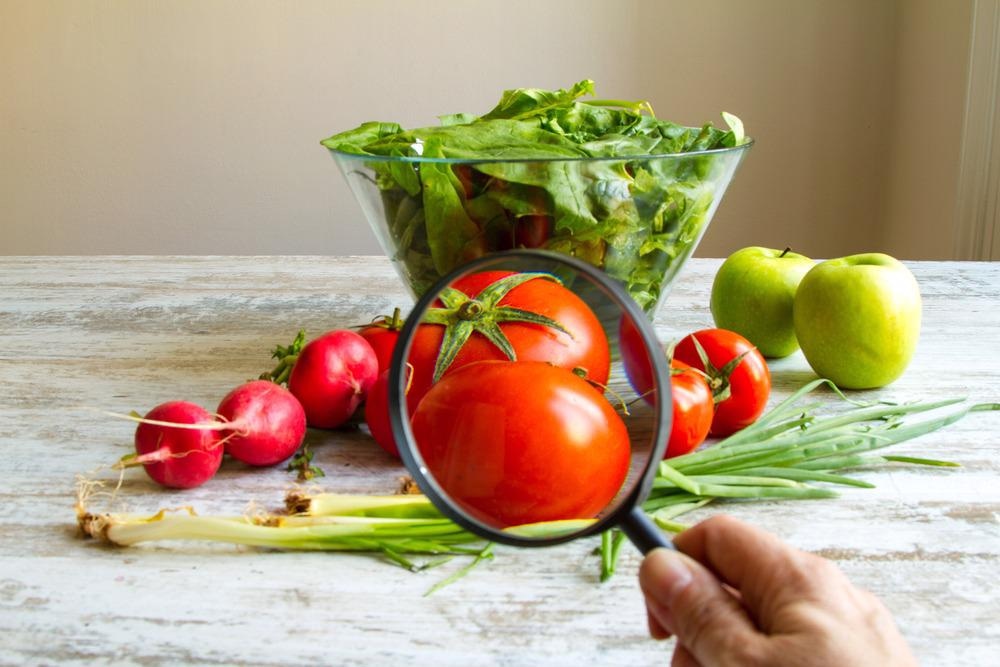Food fraud is a serious problem that we just know too little about. Around the world, manufacturers and distributors cheat consumers by bulking up food with cheaper filler products, ignore bans and restrictions on dangerous or unsustainable ingredients, or disguising inferior food products with undisclosed dyes and additives. Now, scientists are proposing new nanotechnology solutions to help us understand the extent of food fraud today – and tackle it.

Image Credit: conejota/Shutterstock.com
Nanotechnology to Analyze Food
The food and beverages industry operates at huge scales, and is always researching and developing innovative means of quality control and safety monitoring for its food processing operations. Many traditional solutions require specialist operatives and expensive equipment, and they take time away from production schedules already tightly constrained by food’s tendency to spoil.
Recently, nanotechnology has matured to a stage where industrial scale applications are possible. In the case of nanotechnology-based sensing techniques, this means that the food and beverage industry can start to implement food analysis with higher sensitivity and selectivity for a fraction of the initial investment and no ongoing requirement for specialist expertise.
Nanomaterials exhibit sensory properties that are manipulated to create large-scale, sensitive, selective, and automated sensing systems to analyze food and drinks. Materials such as metal nanoparticles (NPs,), magnetic NPs, carbon nanostructures like nanotubes, graphene sheets, and graphene nanofibers, nanowires, and electrospun nanofibers have all been used for practical food analysis in the last few years.
Nanotechnology identifies spoiled food by detecting pathogens, toxins, pH balance changes, and gasses, but it also fights against food fraud by finding adulterants like additives, glucose, melamine, and even urea in consumer food.
New Study at University of Central Florida (UCF)
Recently, UCF Department of Chemistry professor Xiaohu Xia and his colleagues began to develop nanotechnology solutions to tackle the U.S. food industry’s fraud problem – which could be costing consumers between $10 billion and $15 billion each year, according to analysis by the Consumer Brands Association.
As well as bulking up food with less expensive products used as filler, food fraud can also cause people to violate deeply held ethical or religious principles regarding items they do not wish to consume. Not only this, but food fraud also puts people with allergies into physical danger with the possibility of causing serious harm.
In the U.S., the leading types of fraudulent food to be reported are animal meat including fish and sea animals, products made from cows’ milk, bees’ honey, oils and fats, alcoholic beverages, natural sweeteners, and grain products.
Tests to control quality and detect fraud in these products can be expensive and difficult to use. Where cheaper, easier to use tests are available, these tend to be less effective.
To address these problems, the Agriculture and Food Research Initiative from the U.S. government’s Department of Agriculture National Institute of Food and Agriculture invested $490,000 of grant money to UCF and Xia’s research. The Department is seeking new ways of testing food fraud instances like replacing cows’ meat with pigs’ meat in products without correctly labeling the change.
Xia’s research is focused on developing a nanotechnology-based test strip that looks and operates like a home pregnancy test or lateral flow test for COVID-19. The strip should be easily used by test inspectors and consumers alike, and should detect target adulterants in food product samples quickly and reliably.
The new test, which is still in development, is based on the colorimetric lateral flow assay method that most people now know about through rapid at-home COVID-19 tests. Xia’s test will use gold nanoparticles encased in metallic coatings made of sensitive materials like platinum, palladium, or iridium that can increase the device’s sensitivity.
Initial results have already shown that platinum coatings can make current colorimetric lateral flow assays 100 times more sensitive, making them more effective than enzyme-linked immunosorbent assays that the food and beverage industry already uses at considerable expense and time.
The research is now focused on finding metal coatings that can improve sensitivity even further. The project is due to be completed in 2023, and connected with Xia’s wider research in nanotechnology sensing applications for detecting cancer as well as zootropic diseases such as COVID-19.
More Nanotechnology Solutions for Food Fraud Than Ever
Around the world, nanotechnology solutions are being brought to bear on the fight against food fraud more than ever.
For example, scientists recently developed electrochemical sensing methods for detecting Sudan I, which is a synthetic dye found in low-quality chili powder and curry products, using a modified carbon electrode doped with magnetite nanoparticles.
Sudan I can also be detected with platinum nanoparticles around an electrode modified with graphene-β-cyclodextrin. This device had a limit of detection (LoD) of 1.6 nM, as well as sensitivity of 2.82 μA μM−1- cm−2.
Nanotechnology and Fruit Farming; From Fertilizer to Shelves
References and Further Reading
Mohammadi, Z., and S.M. Jafari (2020). Detection of food spoilage and adulteration by novel nanomaterial-based sensors. Advances in Colloid and Interface Science. Available at: https://doi.org/10.1016/j.cis.2020.102297.
Wells, R. (2020). UCF is Developing New Nanotech to Detect Food Fraud. UCF Today. [Online] Available at: https://www.ucf.edu/news/ucf-is-developing-new-nanotech-to-detect-food-fraud/.
Disclaimer: The views expressed here are those of the author expressed in their private capacity and do not necessarily represent the views of AZoM.com Limited T/A AZoNetwork the owner and operator of this website. This disclaimer forms part of the Terms and conditions of use of this website.